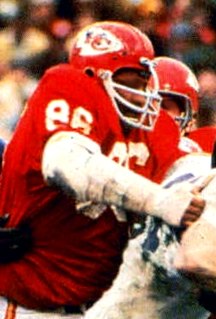This article does not cite any sources .(October 2008) (Learn how and when to remove this template message) |
During the first seven years of existence (1960–1966) of the American Football League (AFL, 1960–1969), the AFL and the NFL held separate, competing drafts for college football talent.

The American Football League (AFL) was a major professional American football league that operated for ten seasons from 1960 until 1969, when it merged with the older National Football League (NFL), and became the American Football Conference. The upstart AFL operated in direct competition with the more established NFL throughout its existence. It was more successful than earlier rivals to the NFL with the same name, the 1926, 1936 and 1940 leagues, and the later All-America Football Conference.
These drafts were conducted differently in each league, with the AFL, as a new league, starting its existence with the 1960 AFL draft that was actually held in December, 1959 and had 33 rounds. Each AFL team had "territorial rights" to players from its general region for a "bonus" draft selection, so that teams could sign players who were known to their fans. These were not "picked" as such, but agreed on by consensus. The 1960 AFL draft proceeded with teams selecting by lot and player position, e.g., each team selected quarterbacks from the available list, then running backs, etc. These were not listed in order of selection, but alphabetically in two groups called "First Selections" and "Second Selections" by each team. Minneapolis-Saint Paul was originally included in the AFL draft on November 22, 1959. When the Minneapolis-Saint Paul owners reneged on their agreement to join the AFL and jumped to the NFL, some of the remaining AFL teams signed several players from the deserters' draft list. To compensate for this, after the Oakland Raiders' AFL franchise was granted, an allocation draft was held, to permit the Raiders to stock their team with players from the other seven AFL teams.

The Oakland Raiders are a professional American football franchise based in Oakland, California. The Raiders compete in the National Football League (NFL) as a member club of the league's American Football Conference (AFC) West division. Founded on January 30, 1960, they played their first regular season game on September 11, 1960, as a charter member of the American Football League (AFL) which merged with the NFL in 1970.
The established NFL held drafts more similar to the present day, in which the team with the worst record from the previous year selected first, and the reigning league champion selected last. Starting in 1961, the AFL also followed this procedure.
Because of the competition between the leagues, unlike today's drafts, they were held soon after the end of the football season in each league, often before the college bowls were over. Many players, such as LSU's Billy Cannon signed pro contracts "under the goalposts" at bowl games; and in the College East-West Game and other all-star college bowls, many players wore the helmets of the professional team that they had signed with.

Louisiana State University is a public research university in Baton Rouge, Louisiana. The university was founded in 1853 in what is now known as Pineville, Louisiana, under the name Louisiana State Seminary of Learning & Military Academy. The current LSU main campus was dedicated in 1926, consists of more than 250 buildings constructed in the style of Italian Renaissance architect Andrea Palladio, and occupies a 650-acre (2.6 km²) plateau on the banks of the Mississippi River.

William Abb Cannon was an American football running back and tight end who played professionally in the American Football League (AFL) and National Football League (NFL). He attended Louisiana State University (LSU), where he played college football as a halfback, return specialist, and defensive back for the LSU Tigers. At LSU, Cannon was twice unanimously named an All-American, helped the 1958 LSU team win a national championship, and received the Heisman Trophy as the nation's most outstanding college player in 1959. His punt return against Ole Miss on Halloween night in 1959 is considered by fans and sportswriters to be one of the most famous plays in LSU sports history.
The AFL was at a disadvantage in name-recognition with the established NFL, but contrary to common belief, during this period, its franchises signed a significant number of stars away from the older league. These included Cannon, as well as eventual Hall of Famers Lance Alworth, Buck Buchanan, Jim Otto, Billy Shaw, and Nick Buoniconti, and such standouts as Matt Snell, Tom Sestak, Charley Hennigan, Abner Haynes, Johnny Robinson and many others.
Lance Dwight Alworth is a former American football player who was a wide receiver for the San Diego Chargers of the American Football League (AFL) and National Football League (NFL) and Dallas Cowboys of the NFL. He played for eleven seasons, from 1962 through 1972, and was elected to the Pro Football Hall of Fame in 1978. He was the first player inducted whose playing career was principally in the AFL. Alworth is also a member of the College Football Hall of Fame.

Junious "Buck" Buchanan was a professional American football defensive tackle with the Kansas City Chiefs in the American Football League (AFL) and in the National Football League (NFL). Buchanan was inducted into the College Football Hall of Fame in 1996 and the Pro Football Hall of Fame in 1990.

James Edwin Otto is a former professional American football center for the Oakland Raiders of the American Football League (AFL) and National Football League (NFL).
